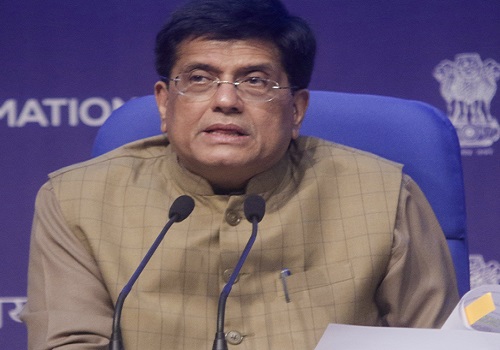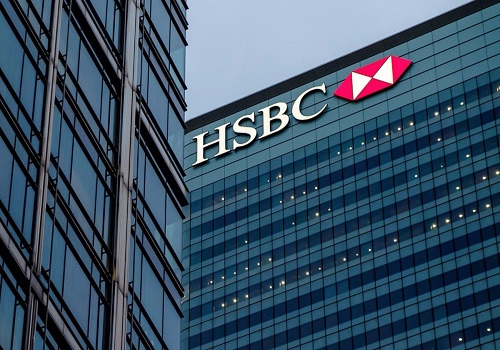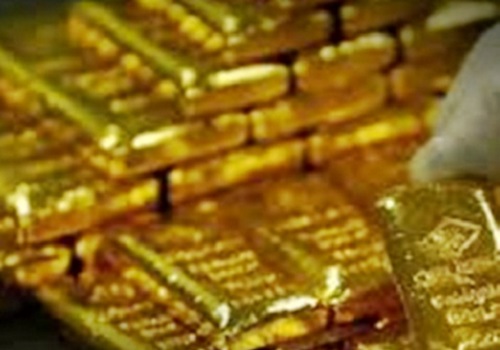Monthly Gold Outlook : According to preliminary estimates, the US economy grew at a 4.9% annualized rate in the September quarter driven mainly by consumer spending Say`s Chirag Mehta, CIO & Ghazal Jain, Fund Manager, Quantum Mutual Fund

Follow us Now on Telegram ! Get daily 10 - 12 important updates on Business, Finance and Investment. Join our Telegram Channel
Below The Monthly Gold Outlook by Chirag Mehta, CIO & Ghazal Jain – Fund Manager Quantum Mutual Fund
Recap
After starting October on a weak footing, gold recaptured the $2000 an ounce territory during the month as fresh geopolitical tensions in the Middle East outweighed the Federal Reserve’s hawkish stance. The geopolitical crises kept risk assets on the edge. Concerns about the crises spilling over to other parts of the oil-rich regions drove up crude prices. Gold, which generally tends to thrive in turbulent environments, moved up sharply ending the month ~6.7% higher on the international as well as domestic fronts. However, the upside in gold was tempered by continued strength in the US currency and US Treasury yields, both driven by expectations of higher interest rates.
Overview
The situation in the Middle East remains volatile. Israel seems pursuing a full ground invasion, despite efforts by other world powers to dissuade them. While Israel’s role in the global oil supply is limited, chances of the fifth largest oil producer - Iran getting involved seem to be increasing by the day. An escalation in the war could have unsettling implications for financial markets.
According to preliminary estimates, the US economy grew at a 4.9% annualized rate in the September quarter driven mainly by consumer spending. This was more than double the last quarter and the fastest pace in nearly two years. This consumer strength will get tested in the coming months as pandemic-era savings dry up, loan moratoriums come to an end and higher interest rates trickle down to mortgage loans and credit card debt. Some very early estimates of Q4 GDP suggest a 1.1% growth, so some backtracking is likely very soon. Housing markets are increasingly showing signs of stress.
The International Monetary Fund (IMF) raised its global inflation forecast for 2024 to 5.8%, up from 5.2% three months ago. The IMF expects inflation in most countries will remain above targets until 2025, complicating central bankers’ jobs. The US Core Personal Consumption Expenditure Index, the Fed’s preferred inflation gauge, registered 3.7% on an annual basis, a slower pace than August’s 3.9%, but rose by 0.3% month-on-month, up from 0.1% in August.
The US government posted a $1.7 trillion budget deficit in fiscal year 2023, a year when the US economy positively surprised everyone. This 23% jump from the prior year thus raises concerns about the fiscal trajectory if the US economy deteriorates going forward which would warrant further fiscal spending. Rising debt levels at a time of historically high-interest rates, is creating a vicious cycle. The dire fiscal situation is likely to result in continued budget battles in the US, risking a government shutdown when the current funding bill ends in mid-November.
To finance the ballooning government debt, the US Treasury is expected to ramp up sales of longer-term debt. Meanwhile, demand looks lackluster as the largest buyer, the US central bank focusses on trimming its balance sheet, foreign buyers led by China and Saudi Arabia incrementally diversify away from the US and investors take a step back due to US credit rating downgrades. This, in addition to the Fed’s ‘higher for longer stance’ is pushing interest rates higher to levels not seen since 2007.
Outlook
The Federal Reserve’s decision to skip a hike again on 1st November, even while the US economy continues to show unexpected strength and inflation slows sluggishly, tells us that the central bank is in a tricky spot. The recent rise in market-based interest rates have made financial conditions very restrictive, possibly doing some of the Fed’s work for them. Additionally, the full impact of their tightening is yet to be felt, making it appropriate to pause. Additional rate hikes at this juncture could result in overtightening and seriously damage the ‘soft landing’ that the Fed is aiming for. However, the Fed cannot declare tightening over with good growth and inflation still above target, which keeps the door open for another hike. This hawkish stance will continue to be a headwind for financial markets.
With US growth looking resilient for now and inflation yet to reach 2%, markets can expect continued hawkishness from the Fed in the near term, which makes Fed overtightening a big risk.
The resulting pullback in activity could trigger some policy easing by the Fed in 2024. While currently the first rate cut is expected only in mid-2024, the Fed’s hawkishness could get tested sooner in case of a major growth setback or a financial accident triggered by elevated interest rates. If the Fed is forced to cut rates while inflation remains above its target, that will be bullish for gold prices.
While global Gold ETFs saw outflows, domestic Gold ETFs saw inflows of INR 1659.5 crores in the September quarter. Central banks added 337 tons of gold in the quarter ending September, taking the year-to-date purchases to 800 tons, and supporting gold prices.
Action plan this Diwali
Further short-term gains in gold from this level are possible if the geopolitical situation worsens. On the flip side, if the situation improves, we could see the geopolitical risk premium in prices come off. As fundamentals of higher interest rates and dollar strength would then come to the front, a reversal in prices is likely, which can be a good opportunity for investors to buy gold.
Downside, however, will be limited as risks of slowing global growth, potential Fed policy easing next year, and robust central bank gold buying will support trade in gold. Thus, while prices have run up quite a bit since the geopolitical crises, medium to long term prospects for gold are looking good. Investors can thus use a buy on dips approach this festive season to build their gold allocation
Above views are of the author and not of the website kindly read disclaimer


.jpg)





















